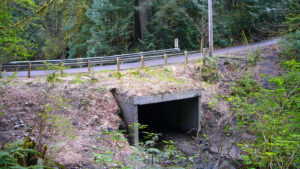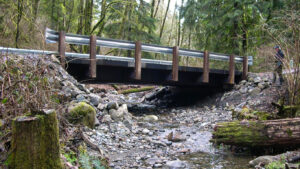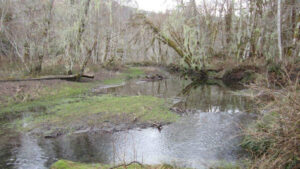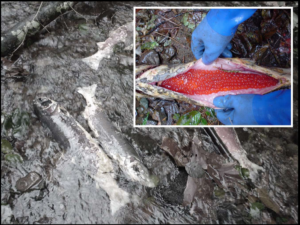
Garrison Creek Watershed Restoration
The goal of this project is to increase adequate flow (to the extent possible) and improve water quality and habitat for all salmonid and native fish species in the Garrison Creek watershed.

The goal of this project is to increase adequate flow (to the extent possible) and improve water quality and habitat for all salmonid and native fish species in the Garrison Creek watershed.

Snyder Cove Creek is a perennial, fish-bearing watershed that flows into the east side of Eld Inlet. It offers excellent spawning and rearing habitat, and currently supports populations of cutthroat trout, sculpin, and lamprey. An undersized (3ft diameter) culvert creates a barrier to the upstream migration of fish, effectively blocking almost one mile of fish habitat.

WFC staff replaced an undersized partial-barrier culvert with a 35′ long by 16′ wide modular steel bridge. Minor in-channel work was performed to provide a consistent gradient through the project reach, and LWD was added to increase instream habitat complexity. Disturbed areas were replanted with native trees and shrubs.

Fish habitat in the Duckabush and Dosewalllips river floodplains was restored through weed control and tree plantings, significantly improving the most active channel migration zone for salmonids.

Spawning serverys were conducted in Whatcom, King and Thurston Counties to identify occurrences of pre-spawn mortality and the land use and GIS features that overlapped with those occurrences.

Wild Fish Conservancy completed spawning surveys in Snohomish County examining dead coho for pre-spawn mortality and high egg retention.
Join our mailing list to recieve important updates on our work, the latest wild fish news, & opportunities to take action to support wild fish.
This site is protected by reCAPTCHA and the Google Privacy Policy and Terms of Service apply.
Wild Fish Conservancy is recognized as a 501(c)3 non-profit by the IRS